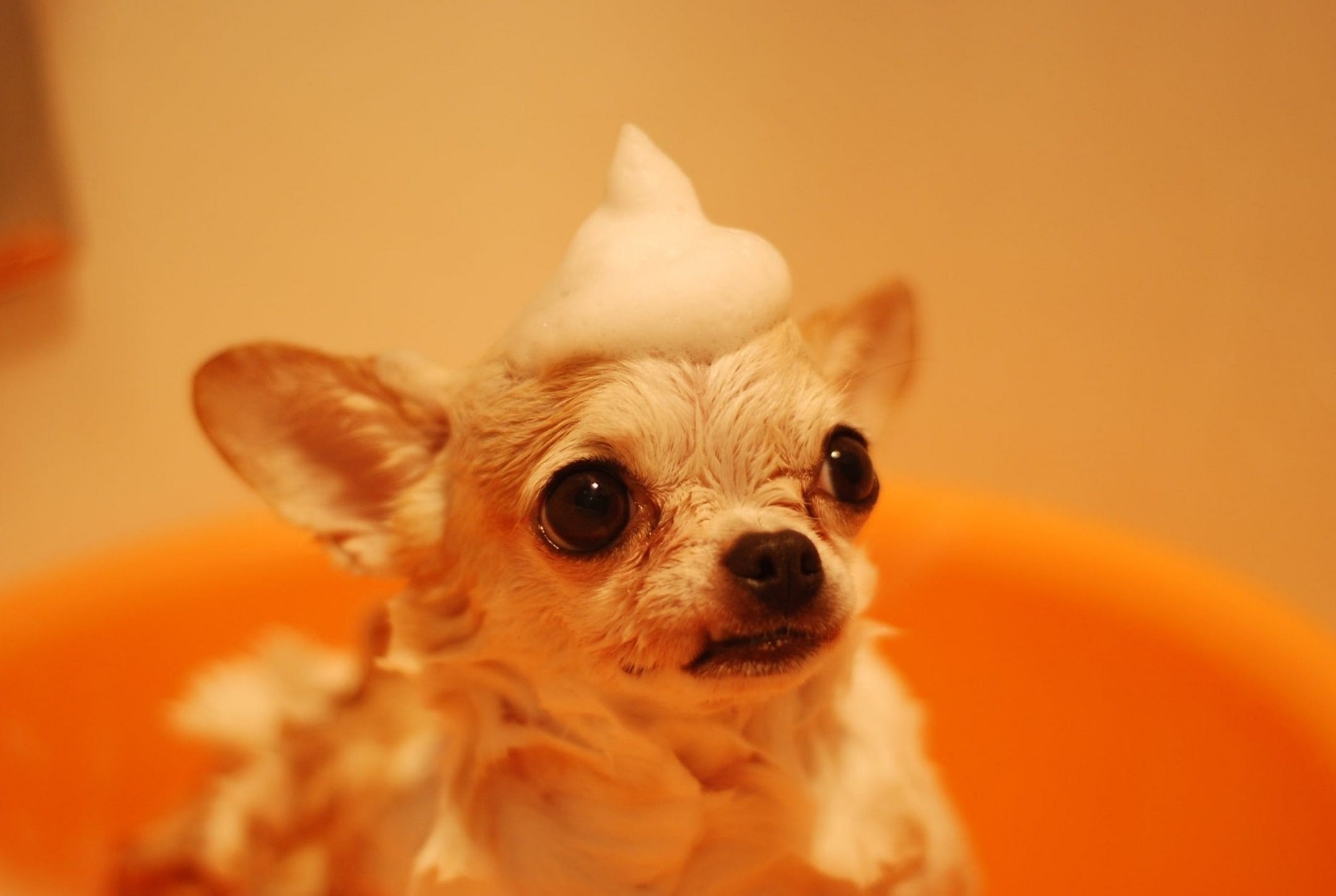Your Cart is Empty
🎉End of Year Sale | Up to 40% OFF
🎉End of Year Sale | Up to 40% OFF
🎉End of Year Sale | Up to 40% OFF

Dog hygiene is a vital part of ownership. Here’s the 101 on grooming, washing and brushing, plus how to keep dog smelling clean and fresh as a daisy!
There are several components to a well rounded dog hygiene routine. But don’t worry, it’s not as labour intensive as you might think, and you don’t have to spend a fortune at the groomers either. If you do have a little extra time but want to save those pennies, you can even try our at Home Spa Day guide instead…
To keep your everyday dog hygiene in tip top shape, we need to cover how often and the best methods for grooming - like brushing, washing & the other little tricks that make all the difference. So here goes, the rapid fire guide coming at you!
How often should you brush your dog? This usually depends on the type of coat your dog has. As a general guide:
Smooth, short-coated dogs - once every few weeks to remove loose hair.
Short, dense furred dogs - once a week or fortnightly.
Long-coated or double-coated dogs - on a weekly basis to prevent mats and to remove tangles.
For dogs with little hair, a grooming mitt is a nice soft option.
Long coated dogs will usually need clipping or more thorough grooming at certain times of the year for help with shedding. Using a professional groomer for these occasions is a wise idea to help your dog feel more comfortable.
Puppies need to learn to enjoy grooming. So take time to build a positive association with brushes, bathing and all the following necessities.
Brushing helps to keep your dog’s coat in great condition by removing shedding hairs and preventing knots. It’s also great for distributing healthy skin oils. It’s also a good time to check for any unwanted visitors, such as fleas or ticks.
How often should you bathe your dog? When necessary.
Bathing is generally required when a dog has been on very muddy walkies, rolled in something unsavoury or if they need to look their best for a show or event. Bathing should be treated as an occasional way to help your dog stay clean and smell delightful, but be careful not to overdo it, as too much bathing can cause skin issues.
However, dogs with certain skin problems may require bathing as part of their treatment plan and your vet can provide advice on this.
Take things slow and easy, you want your pup to be relaxed and comfortable.
Brushing first is a great way to loosen up the hairs before washing.
Using lukewarm water, wet your dog’s hair all the way to the skin.
Best to avoid wetting the head unless completely necessary, as it’s a sensitive area. You can clean this area gently with a washcloth.
Some owners like to use cotton buds or balls to protect a pooches ears.
Once the body is thoroughly wet, apply some hypoallergenic dog shampoo. It’s a good idea to patch test this beforehand. Make sure you get right down to the undercoat, for a good clean and a delicious smell.
Gently rinse out the shampoo thoroughly, using your fingers to ensure that you get all the remaining suds.
Next, you can apply a gentle hypoallergenic dog conditioner if you’d like, letting it sit on the coat for a few minutes.
To dry off, use a large absorbent towel to gently remove as much excess moisture as you can. If you want to use a hair dryer, make sure the air is always at a comfortable temperature and a good distance away from your pup.
How often should you brush your dog's teeth? Ideally everyday! But a few times a week might be a more realistic goal for most owners.
You can now buy special doggy toothbrushes that sit on your finger, and dog-friendly toothpaste, that make the whole process really simple. It might just take your dog a while to get used to the procedure, but treats usually help. Dental toys and chews are also a great way to keep on top of plaque.
Dental problems in dogs can lead to other health issues, so regular dental hygiene dates with your pooch will be good for your pet and can save you from costly vet bills in the future.
How often should you clip your dog’s nails? As needed. Often dogs wear down their own nails through their outdoor adventures, but sometimes they need a helping hand.
If a dog’s nails get too long, it could lead to pain or injury for your pooch.
How to know when to clip? Well, with your furry friend standing in front of you, have a look to see if their nails are touching the ground. If so, then it’s time for a snip.
It’s important to be careful about where you clip, as well as using a dog-friendly scissor. To find the right range with clear or light colored nails is usually easy, but a flashlight can help you determine the location of the quick (the blood supply to avoid) in darker nails. The perfect cutting range ends just before this blood supply.
Even if you’re very cautious, it’s possible to see some blood. Don’t panic, just try to stop the blood flow and prevent any dirt from getting in contact with the wound. If the blood flow doesn’t stop after 30 minutes, then it’s best to contact your vet.
If you’d rather leave it to a professional, most groomers offer nail clipping, or your vet can assist you.
How often should I clean my dog’s ears? This often depends on your dog. Droopy or large-eared breeds will require more regular ear cleaning as they can be more prone to infections. Dogs that like to swim will also require regular ear cleaning too. You can always incorporate ear cleaning into your occasional bathing routine too.
When cleaning follow these steps:
Examine the ear and check for redness, discharge or a bad smell. It is normal for there to be a small amount of light coloured wax. Anything else will most likely need veterinary attention, especially if your dog is sensitive to touch in this area.
Gently wipe around the entrance of the ear with damp cotton wool bud or soft washcloth to remove dirt or excess wax.
Some owners choose to insert a cleaner or use a little mineral oil to clean. Either way, always follow the specific instructions carefully.
So there you have it! With this quick fire guide, your pooch will be coming up roses.
Great hygiene leads to a happy, healthy dog. So you can both enjoy more cuddles in the long run!
See How Dog Owners Are Using These Leak-Free Potty Pads to Keep Their Homes Clean and Pups Happy
4.7 ⭐⭐⭐⭐⭐
Over 100,000 Dog Owners Saved Money With Potty Buddy™
The washable pee pads that absorb anything your dog throws at them, while keeping your floors and furniture stain-free.
✅ Super Absorbent and Leak-Proof
✅ Great for Potty Training
✅ Ideal for Puppies and Older Dogs
✅ Washable and Reusable For Years
✅ Save over $400/year by not buying disposables
-60 Day Money Back Guarantee-

⭐⭐⭐⭐⭐
-Diana D.
These pads are a life saver for my kitchen floor and bedroom carpet! Just ordered 2 more!




Check Out Our Most Popular Content